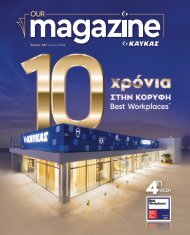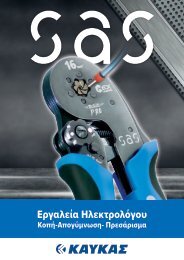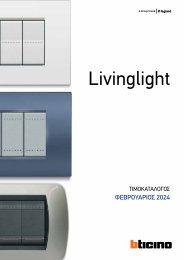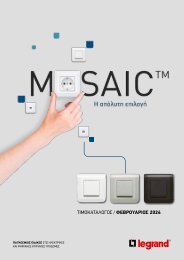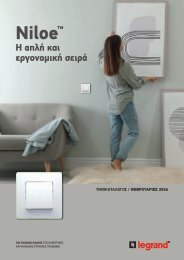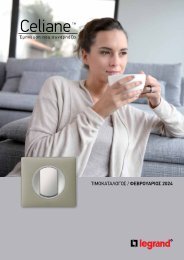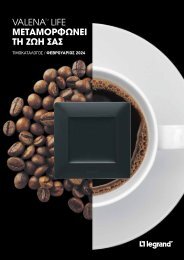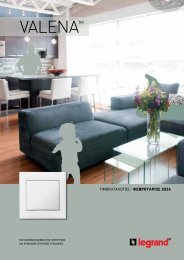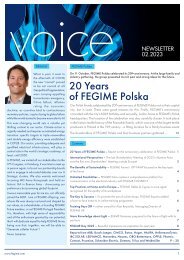You also want an ePaper? Increase the reach of your titles
YUMPU automatically turns print PDFs into web optimized ePapers that Google loves.
Sedna <strong>Design</strong> - Sedna <strong>Elements</strong><br />
Technical Information<br />
RJ45 Data Outlets<br />
www.se.com<br />
Area of application<br />
● There are different types of cable for data networks<br />
(coaxial, optical fiber, etc.), but the cable most<br />
commonly used is the twisted pair cable consisting<br />
of 2 insulated and interlaced copper wires. There are<br />
several types of twisted pair cables:<br />
• the U/UTP cable (Unshielded Twisted Pair) is<br />
a 4-pair twisted cable that is not shielded. It<br />
is intended for small and medium installations<br />
without electromagnetic pollution<br />
• the F/UTP cable (Foiled Twisted Pair) is a 4-pair<br />
twisted cable with general shielding for external<br />
protection, common to all 4 pairs, protecting<br />
them against reduced electromagnetic pollution.<br />
It is suitable for installations requiring minimum<br />
electromagnetic protection<br />
• the S/FTP cable (Shielded Twisted Pair) is<br />
also another 4-pair shielded twisted cable<br />
with protective shielding of each pair against<br />
high electromagnetic pollution. This minimizes<br />
emissions. It is suitable for installations requiring a<br />
high level of electromagnetic protection.<br />
● The RJ45 socket is an 8-pin connector standardized<br />
by ISO8877 for connection of devices to VDI<br />
networks.<br />
● One of the standards most commonly used for<br />
production of structured cabling is that of the North<br />
American Association of electronic and<br />
telecommunications manufacturers (EIA/TIA 568B)<br />
that has defined a color code with 2 alternatives, to<br />
describe connection of the RJ45 connector.<br />
Technical data<br />
Categories<br />
● The most important property defining a data network is the speed at which<br />
information can circulate inside this network. According to this aspect, installations<br />
are classed into the following categories:<br />
Category Transmission rate Network type<br />
Cat. 3 Up to 10 MHz Ethernet 10 Base T, Token Ring 4 Mbps<br />
Cat. 4 Up to 16 MHz Token Ring 16 Mbps<br />
Cat. 5e Up to 100 MHz Ethernet 1000 Base T, ATM 155 Mbps<br />
Cat. 6 Up to 250 MHz Ethernet 1000 Base T, ATM 1200<br />
Cat. 6A Up to 500 MHz Ethernet full-duplex mode 1000 Base T<br />
● So that an installation can be included in a certain category, all the elements<br />
making it up must belong to the same category, or, otherwise, it will be classed in<br />
the category of the lower category element.<br />
Sedna offer<br />
● The Sedna offer satisfies the technical requirements of prevailing regulations and<br />
stand out by the following characteristics:<br />
• ease of mounting: each connector is equipped with a code of colors and<br />
numbers to guide connection without needing special tools<br />
• high connector quality with category 6 and 6 sockets thus allowing us to<br />
propose the quickest connector on the market<br />
• minimum conductor untwisting for connection, thus preventing electromagnetic<br />
interference<br />
• connection reliability<br />
• compact size (particularly for the shielded version).<br />
92 schneider-electric.com




